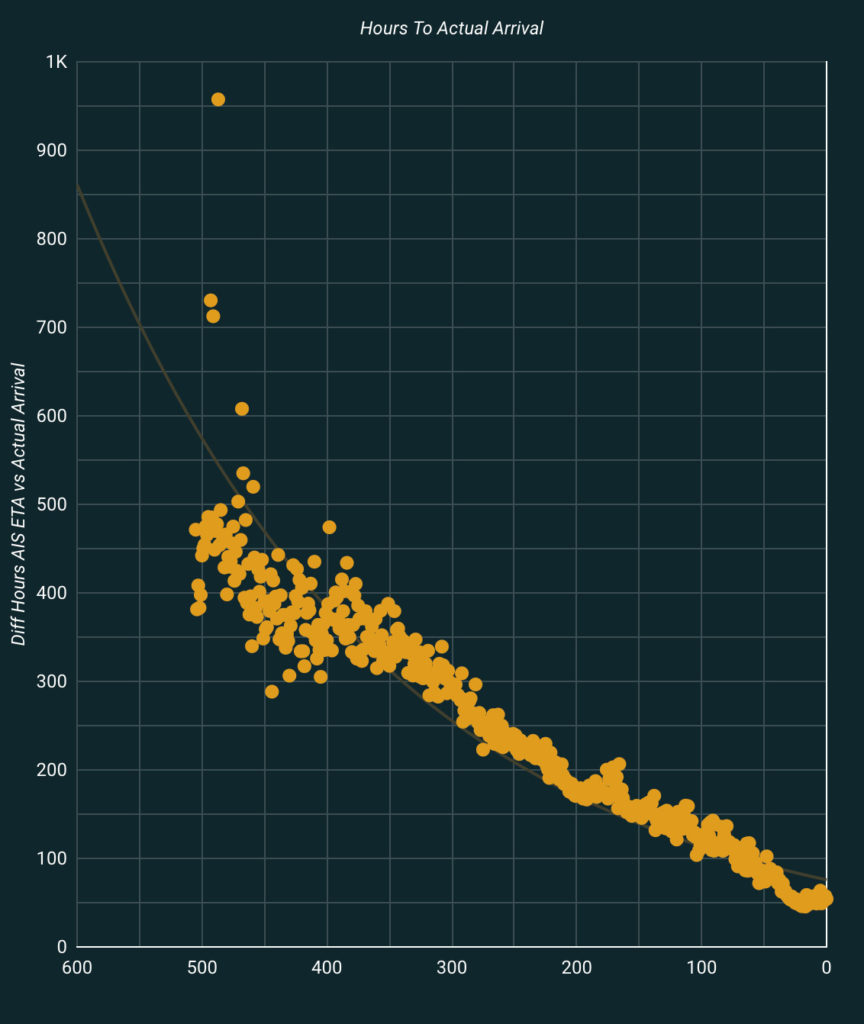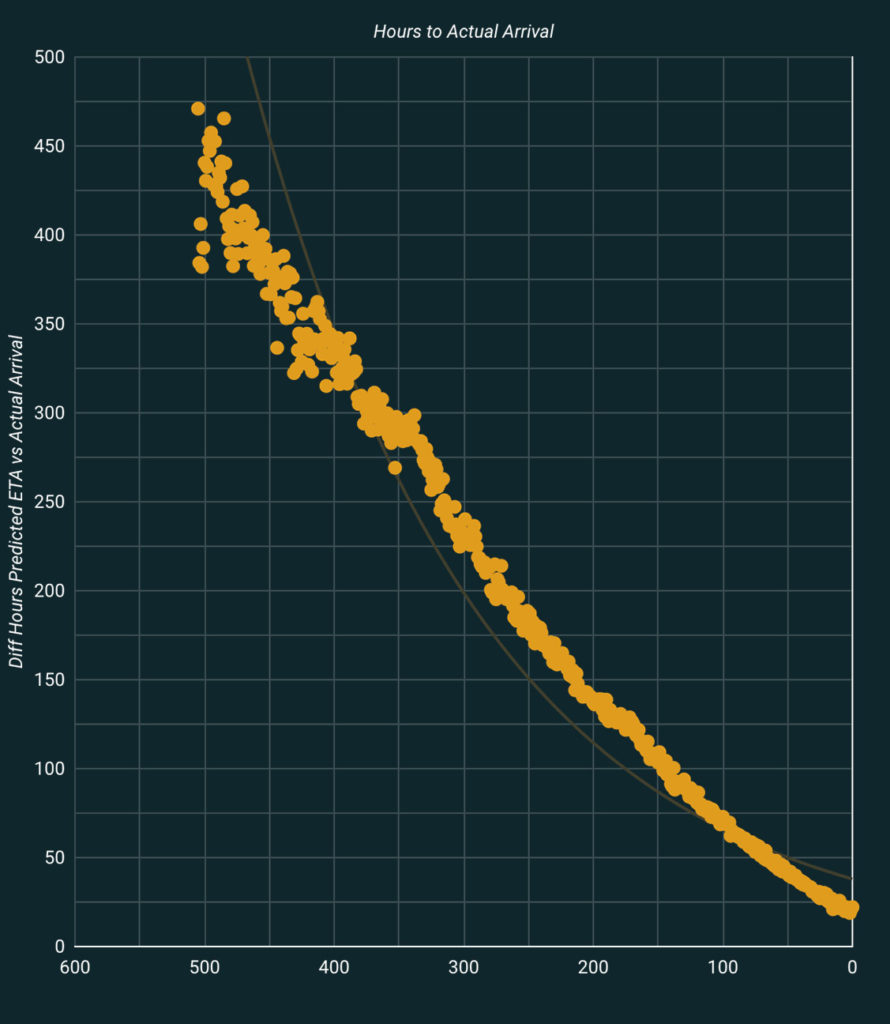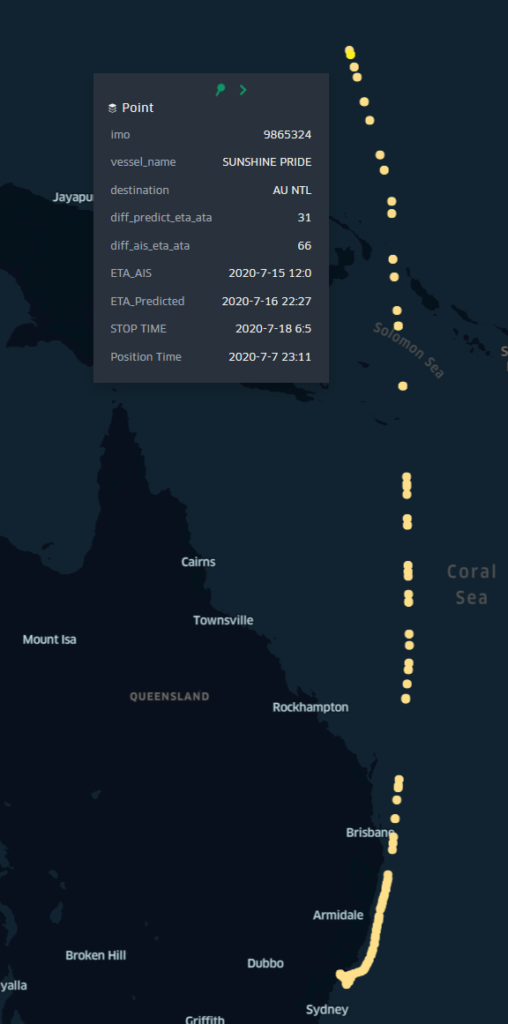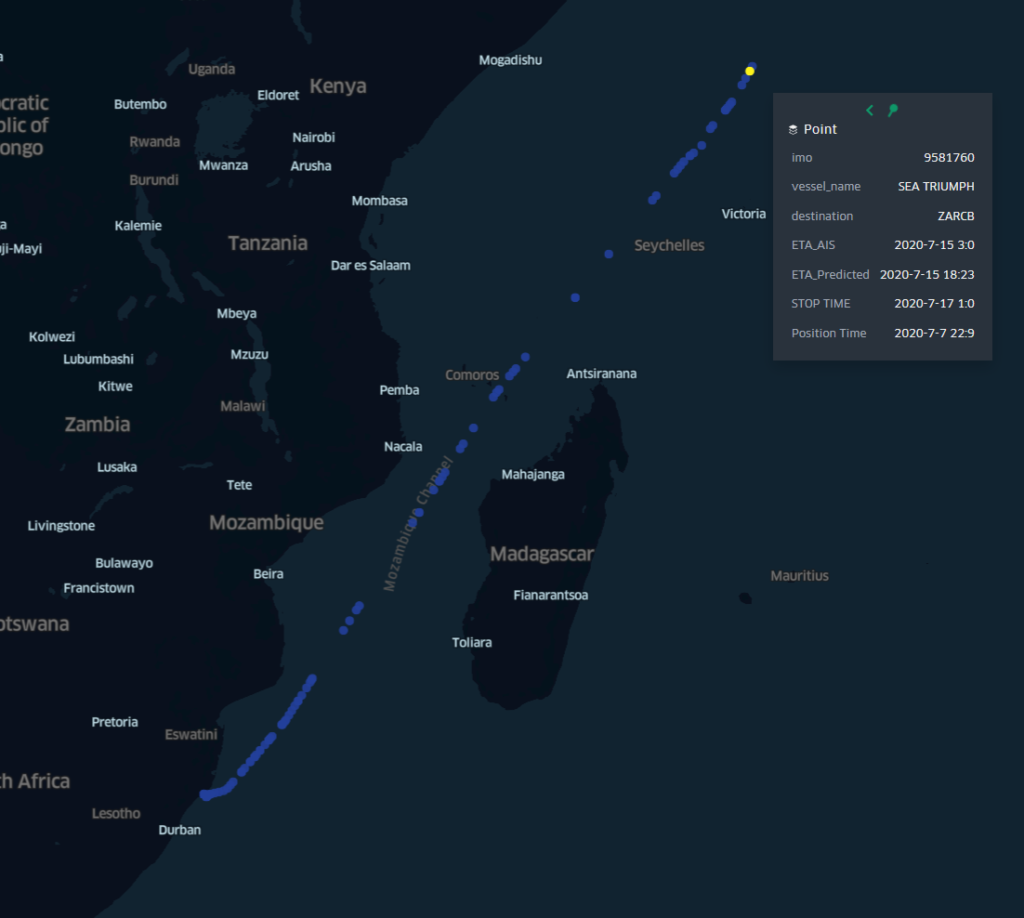How Data Makes Arrival Time Estimating More Dependable – A Study in Timing Arrivals Part 2
Interested in this FREE data set?
This is the second part of a series where we look at the value predicted routing, predicted port ETA, and port matching have on maritime operations.
Knowing when your vessel will arrive at its destination is critical to running optimized maritime operations. At Spire Maritime, we never stop innovating and working to develop solutions that help our customers run the most efficient operations possible. This week we’re comparing AIS reported ETAs and Spire Maritime’s Vessels API ETAs.
Spire’s Vessels API contains premium features including port matching, routing, and predicted port ETA. These features bring value to maritime operations in the areas of monitoring and predicting when a vessel is likely to arrive at its destination and be available for commercial services.
Maritime operations can use Spire’s Vessels API premium features to determine if a ship will arrive at a port in time to meet its contractual obligations, arrive on time to meet a scheduled berthing slot, and book port supply services in advance.
This week we compare the arrival times for three ships: Sunshine Pride, Ferae Australis, and Sea Triumph. We’re comparing the AIS reported ETA to the Spire Vessels API premium features ETA to see which ETA is more accurate and reliable.
Examining the general population of ships
The chart below plots the difference in hours between AIS reported ETAs for vessels and when these ships are recognized at the destination port. It is the average value for all ships reporting the stated number of hours ahead of the actual time of port arrival (ATA). Note how ETAs become more accurate the closer to arrival the ships are, but the overall trend is still generously ahead of actual arrival in port.

Difference in Hours – AIS ETA vs Actual Arrival In Port
The chart below plots the difference in hours between Spire’s Predict AI ETA for vessels and when we recognised those ships first stopping at the destination port.
It is the average values for all ships reporting the stated number of hours ahead of the actual time of port arrival (ATA).
Note how the trend of accuracy of predicted ETAs is more consistently accurate than the AIS reported ETA and the trend, while ahead of the actual arrival in port, is much closer. This is because the prediction is for arrival in port jurisdiction, probably an anchorage outside the port, where there will often be a wait before the vessels enter the port and actually berth.

Difference in Hours – Predicted ETA vs Actual Arrival In Port
Examining Sunshine Pride, Ferae Australis, and Sea Triumph

Sunshine Pride: the predicted ETA was not as accurate as the ship’s ETA for arrival at the port anchorage area, but was within 12 hours and a fairly reliable indicator if the ship had not reported or updated it’s ETA.

Ferae Australis: this ship on 7-July had not updated its ETA, but the Predicted ETA was close to the time when the ship arrived at anchorage outside Port Walcott where similar vessels often wait several days before getting a berth. The Spire predicted ETA was reliable.

Sea Triumph: Spire’s predicted ETA tracks accurately with the well reported Ship ETA, showing the value of Spire’s predicted ETA.
These examples show that when a vessel does not report and update its ETA, which happens often, then Spire’s predicted ETA is a reliable alternative. The predicted ETA can be used to validate reported ETAs and used as a second source to verify operational plans and updating.
Read also:
How Data Makes Arrival Time Estimating More Dependable – A Study in Timing Arrivals